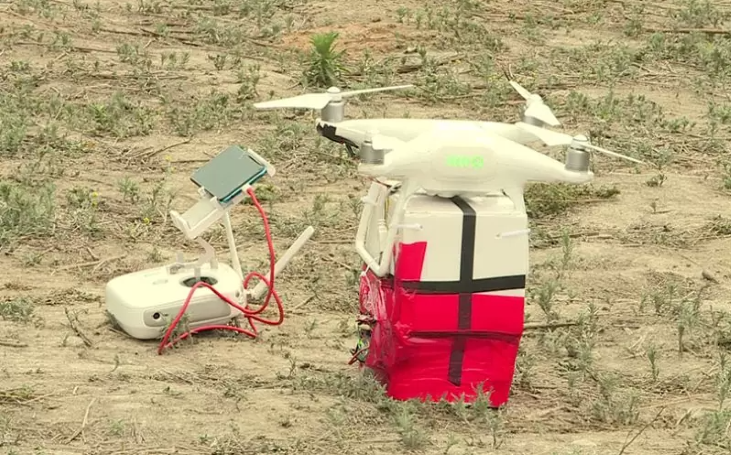 INTERNATIONAL DESK: As Bhutan celebrates the fifth anniversary of its maiden satellite launch in 2018, the country has reached new heights in space, science and technology since then. To commemorate the milestone, the grand finale of the first-ever National Space Challenge was held in the capital yesterday. The event featured a display of satellite prototypes developed by ten teams from two colleges. The GovTech Agency organised the challenge to foster scientific and technological innovation in the country.
INTERNATIONAL DESK: As Bhutan celebrates the fifth anniversary of its maiden satellite launch in 2018, the country has reached new heights in space, science and technology since then. To commemorate the milestone, the grand finale of the first-ever National Space Challenge was held in the capital yesterday. The event featured a display of satellite prototypes developed by ten teams from two colleges. The GovTech Agency organised the challenge to foster scientific and technological innovation in the country.
At dawn yesterday, the top ten teams selected from the College of Science and Technology and the Jigme Namgyel Engineering College gathered near the river in Namseling to launch the satellite prototypes prepared in the last six months. The satellites were launched by drones.
After months of hard work, the teams successfully developed their satellite prototypes, overcoming challenges of weight and cost limitations while incorporating essential systems like power, sensors and communication systems.
The grand moment came as the first team, SatA-1 from the College of Science and Technology launched their prototype using a drone.
Five teams successfully launched the satellites yesterday while the remaining satellites were launched today at the same location.
Twenty-four teams from across the country participated in the competition, with the top ten teams selected from the College of Science and Technology and Jigme Namgyel Engineering College.
Each team was tasked with designing, developing, launching and operating a satellite prototype weighing no more than a kilogram with a budget of Nu 50,000.
Sonam Loday, the representative of team SatA-1 said despite several challenges and issues, they were able to achieve the feat.
“In the end, we got the result we wanted. Our satellite focuses on two major objectives. The primary objective is to track our satellite through GPS location. And the second objective is to take photos while it is in the air so that we can gather the photos and detect whether the land is suitable for agriculture and whether it is healthy or unhealthy.”
While each team had unique secondary missions such as environmental data collection and risk assessments, the primary objectives remained the same across all teams such as transmitting basic data like altitude and GPS location from the satellites.
“We had chosen the secondary mission to have a distress call whereby when there is an emergency, a person can call or call our satellite and through that, the satellite light will send a signal to the ground station and through the ground station we can detect other sectors such as police or health so that we have to accomplish it and it was successful today,” said Diwash Pradhan, Team Bat-Sat from the College of Science and Technology.
The participants couldn’t contain their joy as they witnessed their efforts taking flight. They said that even undergraduate and graduate students are capable of creating functional satellites, dispelling the notion that only scientists develop satellites.
“While studying we got the ideas on how satellites function or work. But we never got hands-on practice. We always say that satellites are made by higher educated or only by some scientists but through this journey, we learned that satellites can be made by undergraduates or graduates. So, we were able to make the functional satellite,” said Phuntsho Dema, Team ArenaSat from Jigme Namgyel Engineering College.
Despite a few setbacks including two satellites being blown off course by the wind, the participants took these challenges as learning opportunities.
“To avoid such issues in the future, we can focus more on establishing the centre of gravity of our satellite. If the center of gravity is established properly then it won’t be shaking so much. So, the parachute will be directly coming down towards the launch site, not like what has happened today. We hope to improve in the future,” said Tenzin Gyeltshen, Team Druk Eye from the College of Science and Technology.
“There were some system failures and some coordination of the components. By looking at the ingenuity and teamwork of the few teams and their perseverance, we found out that they were resilient and adaptable to the changes. We believe that with such teamwork and cooperation, any problem that arises can be easily dealt with,” said Kinley Dorji, Supervisor, National Space Challenge, GovTech Agency.
The finale of National Space Challenge will conclude with presentations from the ten teams tomorrow. It will be followed by the announcement of the top three winners who will receive attractive prizes.
The National Space Challenge will be an annual event hereafter inspiring Bhutan’s journey in space science and technology. (TBL)
iNews covers the latest and most impactful stories across
entertainment,
business,
sports,
politics, and
technology,
from AI breakthroughs to major global developments. Stay updated with the trends shaping our world. For news tips, editorial feedback, or professional inquiries, please email us at
[email protected].
Get the latest news and Breaking News first by following us on
Google News,
Twitter,
Facebook,
Telegram
, and subscribe to our
YouTube channel.



